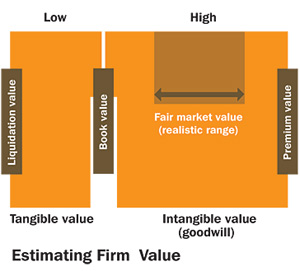Succession plans should be more than schedules for transferring ownership— they should be integral to a firm’s strategic plan to recruit and develop talented staff
Financial strategies and ESOPs
Mechanisms should be considered to promote the purchase by young associates who typically do not have a lot of cash. Usually firms use bonuses, apply salary increases, and sometimes bank loans to accomplish the transfer, so in effect, the firm funds the buyout through its profitability. Payroll deductions from the buyers’ salaries over a period of years can ease the burden as well. But to make the process “real,” prospective owners should always contribute some cash to the buyout so that their own investment is at stake.
An employee stock ownership plan (ESOP) is one way to sell the firm to employees. The ESOP is a type of profit-sharing plan that allows firm employees to have an ownership stake in the firm. Simply stated, a founder sells stock to the ESOP and invests the proceeds. The ESOP uses a bank loan, guaranteed by the firm, to fund the purchase, and the stock goes into the accounts of plan participants as the loan is repaid. An ESOP’s big advantage is that it allows the selling shareholder to defer taxes on the proceeds received from the sale. ESOPs are most appropriate when there is a lot of stock to transfer and not a lot of time to do it. However, they are generally too expensive for small firms to set up. Total fees can range from $25,000 to $30,000 or more for an attorney to write the plan’s documents, an administrator to manage each of the accounts of the participants, a valuator to value the stock every year, and an accountant to prepare reviewed financial statements. Therefore, the tax-deferred savings from ESOPs need to outweigh the expense in creating them. There are deferred compensation plans, as well, that should be evaluated, in which the owner receives payment after retirement to minimize tax liability for both the firm and the seller.
![]() Comment: Share an example of a smooth—or not smooth— ownership transition and perhaps a lesson for others who are about to embark on a similar journey. Comment now.
Comment: Share an example of a smooth—or not smooth— ownership transition and perhaps a lesson for others who are about to embark on a similar journey. Comment now.
More strategic advantages
At its best, succession planning is a valuable part of professional practice and integral to firm culture. Viewed strategically, it can support finding, developing, and advancing the best people, help the firm realize a competitive advantage, and reward the retiring principals in multiple ways. There is a distinction between retiring from ownership and retiring from practice. It may be desirable—for both the firm and the individual—for a former owner to maintain an emeritus role subsequent to official retirement. If there is a substantive contribution to be made, and the retiree is not likely to inhibit an effective transition by preventing new owners from fully engaging, then a different role should be pursued. But, since any involvement is so much a function of specific personalities and motivations, it is difficult say this would always be the case.
Sharing a succession plan with prospective clients on medium-to-large-scale projects can enhance a proposal for services. At the very least, it would demonstrate depth of talent in the firm, and show that there is competent staff available to lead and successfully complete a project in the event of a tragedy. While many firms have such a plan in place, it is rarely communicated to clients, who would undoubtedly appreciate the thoughtfulness of a firm committed to protecting their interests.
According to Sapers, as late as the 1960s, very few firms considered ownership transition because most architects believed that their creative abilities were strictly personal and nontransferable. Sapers, with characteristic wit, equates those architects with the ancient pharaohs who were buried with all of the trappings of their worldly power. Today, most principals realize the importance of guiding their firms into the next generation. There is recognition that the firm has value, and with some focused effort, that value can be transferred to others.
Gordon Mills, FAIA, C.E.O. of Durrant, a 300-person A/E practice headquartered in Des Moines, describes the significance of thoughtful succession planning for his firm so that internal talent can grow and eventually slide into leadership positions. He notes that in today’s tough talent market, having career growth plans and mentoring to help people develop professionally is critically important to retaining top talent.

Left to right: Charlie Marsden, C.O.O., Lori Thielen, C.F.O., Dave Alley, chief marketing officer, and Gordy Mills, FAIA, C.E.O.
Qualifications for future leaders are well-defined. Candidates must demonstrate loyalty, initiative, talent, a strong work ethic, good communication skills, technical ability, and honesty, and must have earned the respect of colleagues.
The firm has targeted metrics for various principal-level positions; for example, project management has one set, marketing another, and so on. Those who are in this principal track are generally on a three-year plan, with measurements in each year, with the expectation that all targets will be met at the end of the three years. There is, however, a degree of flexibility. For example, substantial progress toward interim goals may be sufficient to qualify a candidate to become a principal earlier.
The managing principal in each of the firm’s 11 offices develops a career plan tailored to the associate or partner nominee, with goals matched to their position.
The succession plan is revised annually and modified to reflect company reorganization and fill any gaps. The company is growing at about 15 percent per year, which requires a combination of hiring new talent and internal promotions.


Post a comment to this article
Report Abusive Comment